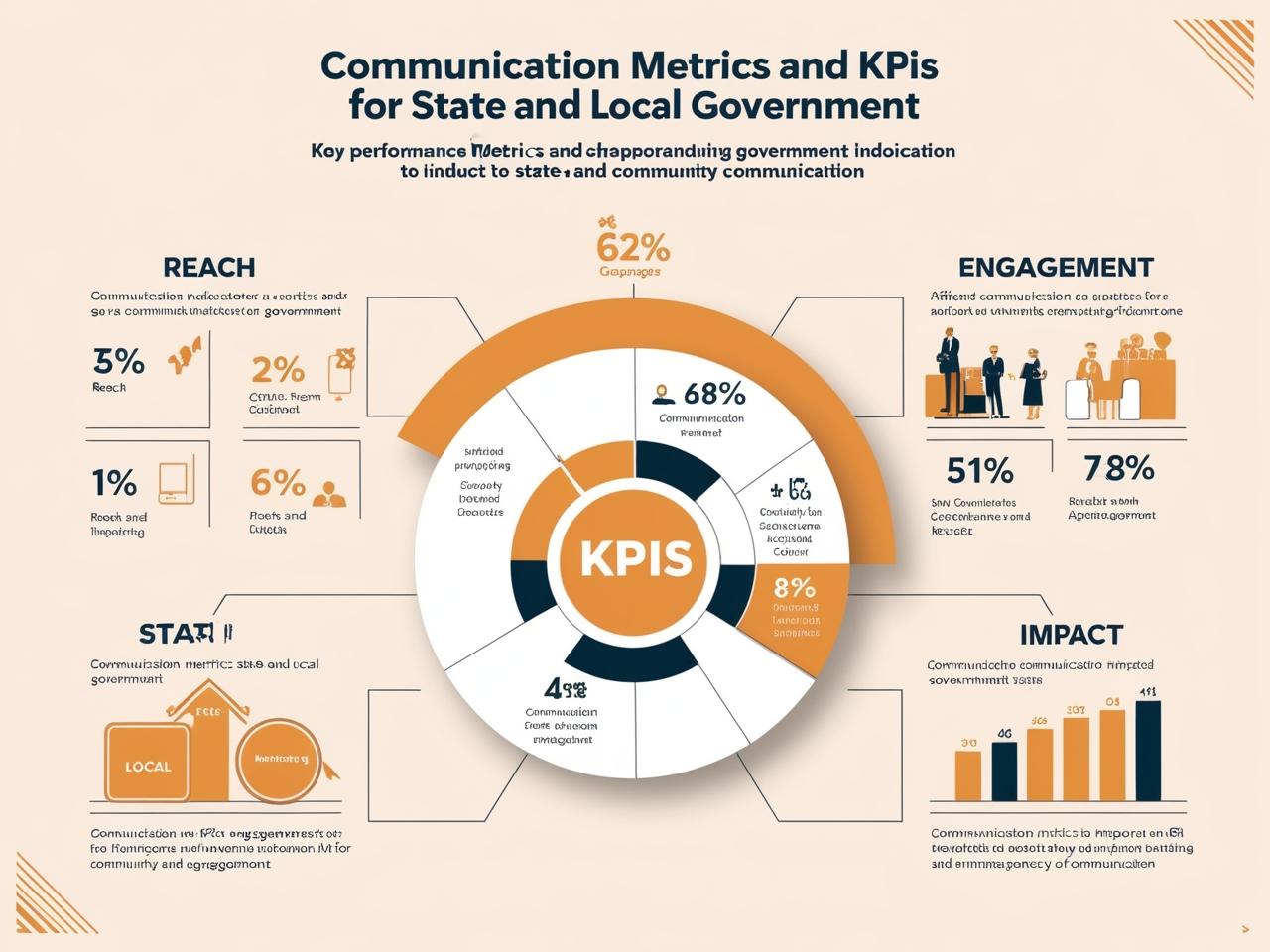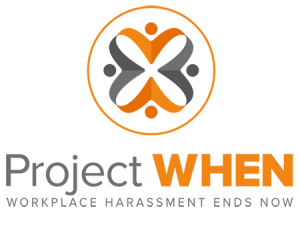Maximizing Impact: Communication Metrics & KPIs for State and Local Government
 Effective communication is at the heart of successful governance. In an era where digital media and community engagement shape public perception, state and local government agencies must ensure their messages reach the right audience, at the right time, through the right channels. However, crafting impactful communication strategies is not enough—measuring their effectiveness is equally essential.
Effective communication is at the heart of successful governance. In an era where digital media and community engagement shape public perception, state and local government agencies must ensure their messages reach the right audience, at the right time, through the right channels. However, crafting impactful communication strategies is not enough—measuring their effectiveness is equally essential.
By utilizing metrics and key performance indicators (KPIs), agencies can assess the reach, engagement, and impact of their communication efforts. Without these insights, governments risk inefficient resource allocation, missed opportunities for community engagement, and a lack of transparency. This article explores the key metrics and KPIs that drive successful government communication strategies.
Why Measuring Communication Effectiveness Matters
Effective public communication is a cornerstone of state and local government agencies. But how do you know if your communication efforts are working? The answer lies in metrics and key performance indicators (KPIs)—data-driven insights that measure the success of your strategies and inform continuous improvement.
By tracking, analyzing, and optimizing your communication efforts, your agency can:
- Enhance public trust and engagement
- Improve transparency and accountability
- Ensure resources are allocated efficiently
- Drive meaningful policy and program outcomes
In this comprehensive guide, we’ll break down the top KPIs for government communications, tools for data collection, and best practices for optimizing your strategy based on performance insights.
Understanding Key Performance Indicators (KPIs)
What Are KPIs in Government Communications?
Key Performance Indicators (KPIs) are measurable values that indicate whether your communication efforts are achieving their intended objectives. These metrics help you determine the reach, engagement, and impact of your messaging across various platforms.
Why KPIs Are Crucial
Without data, you’re making decisions based on assumptions. KPIs provide a clear picture of what’s working and what needs adjustment, allowing you to optimize your strategy for better community outreach and engagement.
By using measurable data points, your agency can move beyond gut feelings or anecdotal evidence and instead rely on concrete insights. KPIs help you identify trends, understand audience behavior, and pinpoint which areas require improvement. For instance, if website traffic is high but engagement is low, this could indicate a need for clearer messaging or a better user experience. If social media engagement is thriving but public meetings have low attendance, it may suggest a need to align digital efforts with in-person outreach.
Additionally, KPIs support resource allocation by helping agencies determine where to invest time, staff, and budget. If an email newsletter has a high open rate but a low click-through rate, refining the call-to-action (CTA) or restructuring content may yield better results. Regular tracking ensures that your communication strategies are not only effective but also adaptable to changing audience preferences and technological trends.
Ultimately, incorporating a robust KPI framework leads to data-driven decision-making, enabling your agency to deliver clearer, more impactful messaging while fostering greater public trust and engagement.
Essential KPIs for Government Communication Strategies
1. Website Performance Metrics
Your agency’s website is often the first point of contact for residents looking for information. Understanding how users interact with your site helps optimize content and improve accessibility.
Key Metrics to Track:
- Website Traffic – Total visits and unique visitors over time
- Bounce Rate – Percentage of visitors who leave after viewing only one page
- Average Time on Page – Measures how engaging your content is
- Pageviews Per Session – Indicates how deeply users explore your site
- Mobile vs. Desktop Traffic – Helps you optimize content for different devices
Tools to Consider: Google Analytics, Matomo, Microsoft Clarity
2. Email Engagement Metrics
Email remains a powerful tool for government communications, particularly for newsletters, emergency alerts, and community updates.
Key Metrics to Track:
- Open Rate – Percentage of recipients who open your emails
- Click-Through Rate (CTR) – Percentage of recipients who click on links within the email
- Unsubscribe Rate – The number of people opting out of future emails
- Email Conversion Rate – The percentage of recipients who take a desired action (e.g., signing up for an event, completing a survey)
Tools to Consider: Mailchimp, Constant Contact, HubSpot, GovDelivery
3. Social Media Engagement
Social media platforms like Facebook, Twitter, LinkedIn, and Nextdoor play a vital role in public communication. Measuring engagement helps refine content strategies for maximum reach.
Key Metrics to Track:
- Followers Growth Rate – Measures audience expansion over time
- Engagement Rate (Likes, Shares, Comments) – Indicates how well your content resonates with the community
- Reach & Impressions – Shows how many people see your posts
- Video Views & Watch Time – Tracks engagement with video content
Tools to Consider: Facebook Insights, Twitter Analytics, Sprout Social, Hootsuite
4. Public Meeting & Event Metrics
Public meetings, town halls, and virtual Q&A sessions are critical for government transparency. Evaluating attendance and participation can guide improvements in event outreach.
Key Metrics to Track:
- Registration & Attendance Rates – Number of attendees vs. sign-ups
- Engagement Levels – Audience participation through questions, polls, and discussions
- Live Stream Viewership – Number of people watching real-time online broadcasts
- Feedback Scores – Attendee ratings and qualitative responses
Tools to Consider: Zoom, Microsoft Teams, Eventbrite, SurveyMonkey
5. Crisis Communication Effectiveness
During emergencies, accurate and timely communication is critical. KPIs help measure how well crisis messaging is received and acted upon.
Key Metrics to Track:
- Time to First Public Message – Speed of initial response
- Reach & Distribution – Number of residents reached via alerts
- Public Sentiment – Social media analysis of public reactions
- Call Center & Helpdesk Volume – Number of inquiries before and after communication
Tools to Consider: Everbridge, RAVE Alert, Google Trends, Brandwatch
6. Community Feedback & Sentiment Analysis
Listening to public sentiment is crucial for refining communication strategies and addressing concerns.
Key Metrics to Track:
- Survey Response Rates – Measures public willingness to engage
- Net Promoter Score (NPS) – Gauges resident satisfaction with government services
- Public Sentiment Analysis – Uses AI to analyze social media and community feedback
- Comment Trends – Identifies recurring issues in community discussions
Tools to Consider: Qualtrics, SurveyMonkey, Google Forms, Social Listening Tools (Brandwatch, Talkwalker)
How to Collect & Analyze Communication Data
Step 1: Choose the Right Analytics Tools
Select tools that align with your agency’s goals and available resources. Free tools like Google Analytics and Facebook Insights provide valuable baseline data, while premium platforms offer deeper insights.
Step 2: Set Benchmarks & Goals
Define clear objectives for each KPI. For example:
- Increase website traffic by 20% in 6 months
- Achieve a 25% email open rate
- Grow social media engagement by 15% per quarter
Step 3: Monitor & Optimize Regularly
Analyze your data weekly or monthly to spot trends. Adjust content, messaging, or platform strategies accordingly.
Step 4: Report Findings to Stakeholders
Communicate KPI insights with leadership, staff, and the public to demonstrate transparency and effectiveness. Use data visualization tools like Tableau or Power BI for compelling reports.
Best Practices for Optimizing Communication KPIs
✅ Use Data to Drive Decisions – Avoid assumptions; let analytics shape your strategy.
✅ Test & Iterate – Experiment with different formats (videos, infographics, articles) to see what resonates best.
✅ Prioritize Accessibility – Ensure your website, emails, and social content meet ADA compliance and language access needs.
✅ Foster Two-Way Communication – Engage in conversations through polls, surveys, and live Q&As to improve relationships with constituents.
✅ Stay Adaptable – Monitor industry trends and emerging technologies to keep your strategy relevant.
Case Study: Communicating Modernization – The Chicago Transit Authority’s “Your New Blue” Campaign
To illustrate how KPIs drive successful government communication strategies, let’s examine the Chicago Transit Authority (CTA)’s “Your New Blue” campaign, which modernized the Blue Line while maintaining transparency and community trust.
Step 1: Public Awareness and Transparency (Website, Email, Social Media KPIs)
To keep riders informed, CTA used a mix of digital and traditional channels:
- Website Traffic: The “Your New Blue” microsite provided updates, timelines, and details about station improvements.
- Email Open and Click-Through Rates: CTA sent newsletters with construction schedules, alternative routes, and impact reports.
- Social Media Engagement: Regular Twitter, Facebook, and Instagram posts featured project progress, real-time updates, and responses to rider inquiries.
- Community Meeting Attendance: CTA held public forums to address concerns and collect feedback.
By measuring website visits, email engagement, and social media interactions, CTA ensured its messages were reaching and resonating with the public.
Step 2: Visual Storytelling and Multimedia Engagement (Social Media KPIs)
CTA invested in high-quality visual storytelling to communicate project progress effectively:
- Video View Counts & Watch Time: Time-lapse videos of station renovations increased project visibility.
- Infographic Shares & Comments: Easy-to-digest graphics explaining construction phases boosted engagement.
- Rider Testimonials: Personal stories helped humanize the project, making it more relatable.
By tracking shares, comments, and watch time, CTA refined its content strategy for maximum impact.
Step 3: Phased Construction Approach (Crisis Communication & Public Sentiment KPIs)
To reduce rider disruptions, CTA:
- Monitored Public Sentiment via surveys and online feedback to adjust project messaging.
- Tracked Crisis Communication Effectiveness: Measured how quickly service change alerts reached riders.
- Analyzed Alternative Route Adoption: Evaluated shuttle usage data during track closures.
Using real-time feedback and sentiment analysis, CTA adjusted outreach strategies to minimize commuter frustrations.
Step 4: Community-Focused Station Redesigns (Community Engagement KPIs)
CTA prioritized neighborhood input to enhance station upgrades:
- Survey Response Rates: Residents submitted preferences on public art, lighting, and accessibility.
- Increased Public Engagement: Local businesses were featured in promotional efforts during construction.
- Sentiment Analysis Scores: Post-upgrade surveys measured satisfaction levels.
This approach strengthened community trust, ensuring that modernization efforts reflected local needs.
Step 5: Long-Term Rider Engagement (Sustainability & Service KPIs)
To maintain ongoing support, CTA:
- Monitored Rider Feedback through periodic surveys and polls.
- Tracked Post-Project Ridership Trends to gauge long-term success.
- Measured Economic Impact: Business traffic near renovated stations was analyzed for positive growth.
By continuously analyzing rider behavior, service improvements, and economic impact, CTA demonstrated measurable project success.
 Lessons from “Your New Blue” for Government Communication Strategies
Lessons from “Your New Blue” for Government Communication Strategies
The success of “Your New Blue” highlights several key takeaways for government agencies implementing infrastructure projects:
✅ Prioritize Transparency: Maintain open communication through websites, email, and social media.
✅ Engage the Community: Use surveys, public forums, and digital feedback tools to involve residents.
✅ Leverage Data-Driven Decision Making: Analyze KPIs to refine messaging, optimize outreach, and measure impact.
✅ Use Visual Storytelling: Multimedia content—videos, infographics, and testimonials—enhances engagement.
✅ Implement Phased Approaches: Break large projects into smaller phases to minimize disruptions and maintain support.
✅ Measure Long-Term Success: Continuously track engagement, ridership growth, and public sentiment to validate project benefits.
Final Thoughts
The role of KPIs in government communication cannot be overstated. They provide a quantifiable measure of success, guiding agencies in making informed decisions that enhance public engagement and transparency. Without tracking these key metrics, agencies risk ineffective outreach, wasted resources, and diminished trust from the community.
As the Chicago Transit Authority’s “Your New Blue” campaign demonstrates, a well-structured KPI framework ensures that public communication efforts are strategic, responsive, and impactful. By continuously analyzing engagement levels, sentiment, and effectiveness, government agencies can refine their messaging, optimize resource allocation, and build lasting relationships with their communities.
Looking ahead, the key to sustainable and effective public communication lies in embracing data-driven strategies, leveraging technology, and maintaining an open dialogue with the community. With the right tools and methodologies in place, agencies can elevate their communication efforts, fostering greater public trust and long-term engagement.
If you’re interested in learning more about the Chicago Transit Authority’s‘ successful communication campaign, you can read more here.
To support agencies in refining their approach, we’ve developed a Comprehensive Guide to Public Communications for State and Local Government Agencies, which outlines six critical components for effective communication:
- Communication Strategy & Planning – Establishing a clear communication framework that defines core messaging, aligns internal and external communications, and ensures a structured approach to public outreach.
- Platform & Infrastructure Build-Out – Developing the necessary digital and physical infrastructure to support effective communication, including websites, social media channels, and government service portals.
- Content Planning & Scheduling – Creating a content roadmap to maintain consistency, tailor messaging for different audiences, and ensure timely delivery of key updates.
- Content Development & Delivery – Crafting compelling, accessible, and engaging messages across multiple formats, from press releases and social media posts to public service announcements and interactive content.
- Internal Communication Alignment – Ensuring that internal teams and stakeholders are informed, aligned, and prepared to support external messaging efforts, preventing inconsistencies and miscommunication.
- Metrics & Key Performance Indicators (KPIs) – Establishing measurable goals and tracking engagement, audience reach, and impact to continuously refine and improve communication efforts.
Each of these elements plays a crucial role in strengthening government communications and ensuring that agencies can effectively connect with their communities. For a deeper dive into these strategies, including real-world case studies and actionable insights, read the full guide here.
Ready to Elevate Your Agency’s Public Communication?
We understand the unique challenges state and local government agencies face—from complex issues to diverse community needs. Our comprehensive approach can help you transform the way you connect with constituents, improve transparency, and highlight the valuable work your agency does every day.
Interested in learning more? Reach out to us today for a consultation. We’d love to discuss how our services can support your goals and help you build lasting trust with the communities you serve.



 Lessons from “Your New Blue” for Government Communication Strategies
Lessons from “Your New Blue” for Government Communication Strategies

